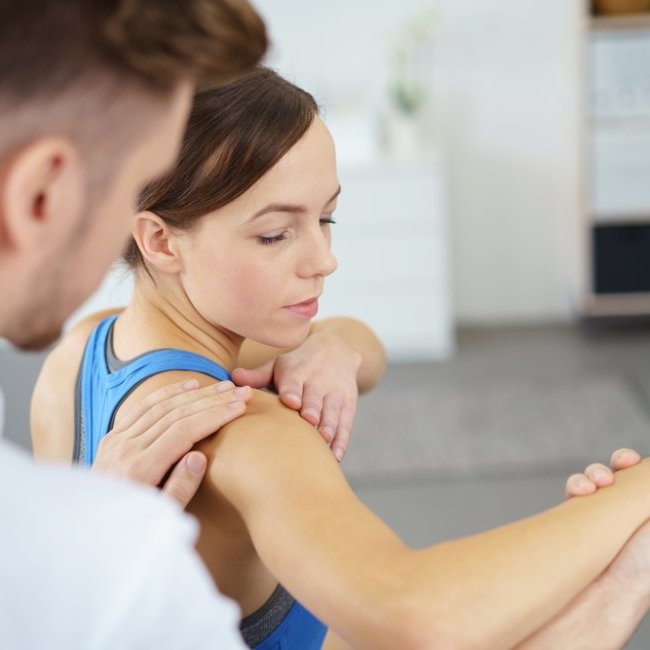


Physicians
Orthopedic Surgery
Shoulder & Knee
Sports Medicine
 Healthgrades
Healthgrades
Orthopedic Surgery
Shoulder & Knee
Sports Medicine
 Healthgrades
Healthgrades
Orthopedic Surgery
Shoulder & Knee
Sports Medicine
 Healthgrades
Healthgrades
Orthopedic Surgery
Shoulder & Knee
Sports Medicine
 Healthgrades
Healthgrades
Orthopedic Surgery
Shoulder & Knee
Sports Medicine
 Healthgrades
Healthgrades
Body parts
Your shoulder is the most mobile joint in the human body, allowing you to accomplish great things with your upper extremities. However, because of this mobility, the shoulder is also predisposed to develop instability and relies heavily on the labrum – a thick rim of cartilage attached to the edge of the shoulder socket -- and surrounding capsule ligaments for support.
Whether you’re throwing a ball or lifting a box, this rubbery tissue between the glenoid (the socket part of the shoulder joint) and the humerus (upper arm bone) helps stabilize the ball of your shoulder joint to keep it in place.
If the labrum tears, which can result from an injury or the aging process, there won’t be enough tissue to act as cushioning between the bones and to stabilize the shoulder joint.
A labral tear can result from reaching your arm out to break a fall, a blow to your shoulder, dislocating your shoulder or from doing something that pulls hard on your arm, such as lifting something heavy. Labral tears can also result from repetitive motions involved in weightlifting and sports that involve throwing.
For a diagnosis and treatment, your Orthopedic Institute of New Jersey (OINJ) shoulder doctor will ask you about how you may have injured your shoulder. If you remember a specific incident or know when you first noticed the pain, that’s helpful information. Your shoulder doctor will do several tests to check for shoulder range of motion, maneuvers that cause pain and/or a sensation of instability. The stability of your shoulder will also be assessed and compared to your other shoulder. To make an informed diagnosis, your doctor may order an X-ray, which can help rule out other reasons for your shoulder pain. A CT scan or MRI can also be useful to detect a tear of your labrum. Ultimately, arthroscopic surgery – visualizing your labrum with a small camera – has the greatest ability to diagnose a tear.
To treat a labral tear, non-operative treatment, including a brief period of sling immobilization, anti-inflammatory pain medications and activity modification may be enough to provide symptom relief. Your shoulder doctor may also recommend physical therapy; doing specific exercises can help strengthen the rotator cuff, a group of muscles and tendons in your shoulder that hold your shoulder joint in place, which may help reduce shoulder pain and instability so you can move your arm more easily.
If those conservative measures aren’t enough, your OINJ shoulder orthopedic doctor may recommend surgery to repair the labral tear. Surgery is typically done using a minimally invasive arthroscopic approach. The labral tear is identified using the arthroscope (camera) and cleaned to prepare it for repair and maximize healing. The labrum is then repaired using a combination of suture and suture anchors to bring the labrum and ligaments back to the glenoid rim where they belong, restoring shoulder stability and relieving pain. If the labrum is frayed from age-related wear, gentle cleaning of the labrum with arthroscopic tools may be all that is necessary to address your shoulder pain.